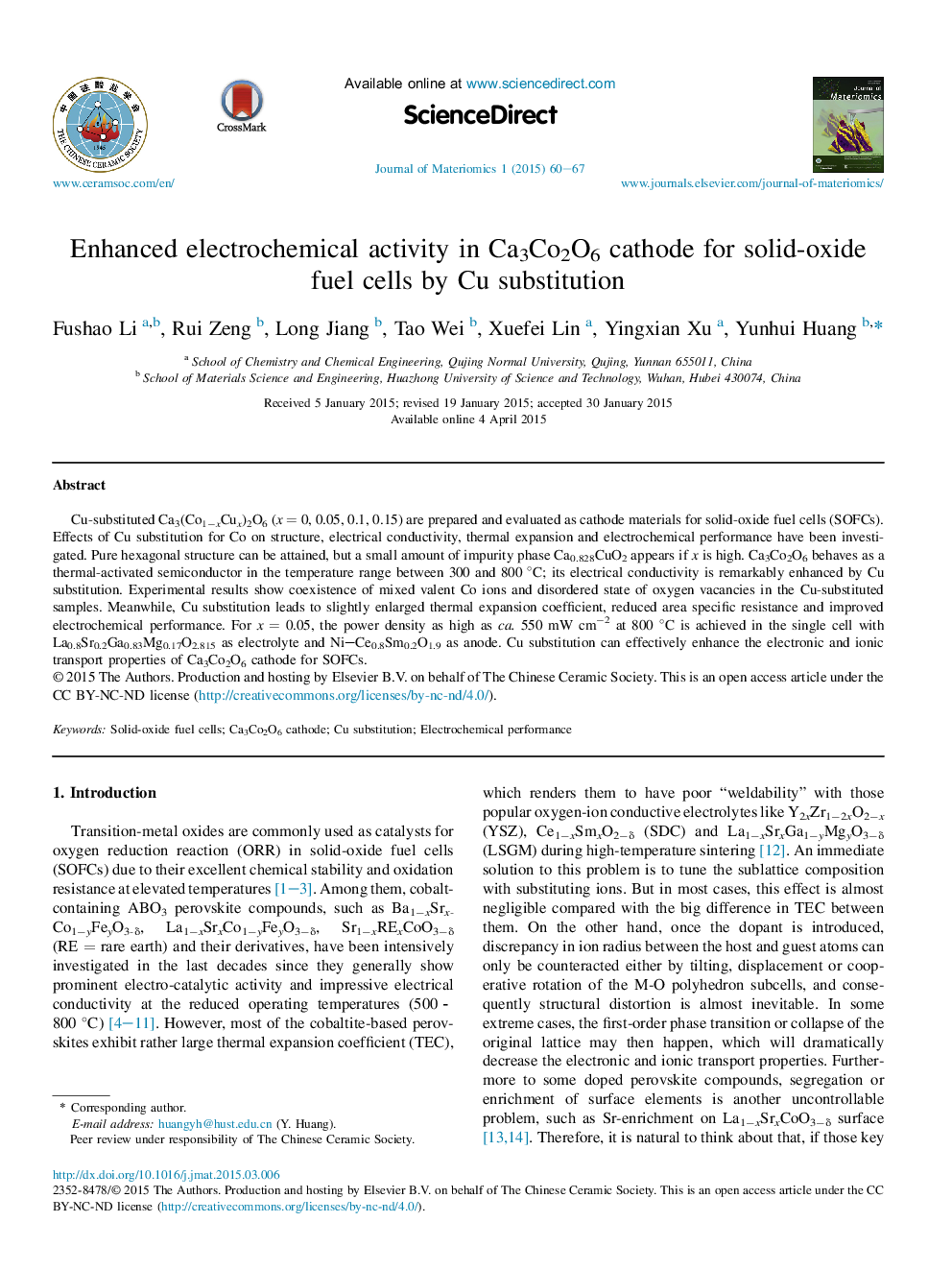| Article ID | Journal | Published Year | Pages | File Type |
|---|---|---|---|---|
| 1515178 | Journal of Materiomics | 2015 | 8 Pages |
Cu-substituted Ca3(Co1−xCux)2O6 (x = 0, 0.05, 0.1, 0.15) are prepared and evaluated as cathode materials for solid-oxide fuel cells (SOFCs). Effects of Cu substitution for Co on structure, electrical conductivity, thermal expansion and electrochemical performance have been investigated. Pure hexagonal structure can be attained, but a small amount of impurity phase Ca0.828CuO2 appears if x is high. Ca3Co2O6 behaves as a thermal-activated semiconductor in the temperature range between 300 and 800 °C; its electrical conductivity is remarkably enhanced by Cu substitution. Experimental results show coexistence of mixed valent Co ions and disordered state of oxygen vacancies in the Cu-substituted samples. Meanwhile, Cu substitution leads to slightly enlarged thermal expansion coefficient, reduced area specific resistance and improved electrochemical performance. For x = 0.05, the power density as high as ca. 550 mW cm−2 at 800 °C is achieved in the single cell with La0.8Sr0.2Ga0.83Mg0.17O2.815 as electrolyte and Ni–Ce0.8Sm0.2O1.9 as anode. Cu substitution can effectively enhance the electronic and ionic transport properties of Ca3Co2O6 cathode for SOFCs.
Graphical abstractWe prepared Ca3(Co1−xCux)2O6 powder by sol–gel processing and found that Cu substitution can effectively enhance the electronic and ionic transport properties of Ca3Co2O6 cathode for SOFCs.Figure optionsDownload full-size imageDownload as PowerPoint slide
